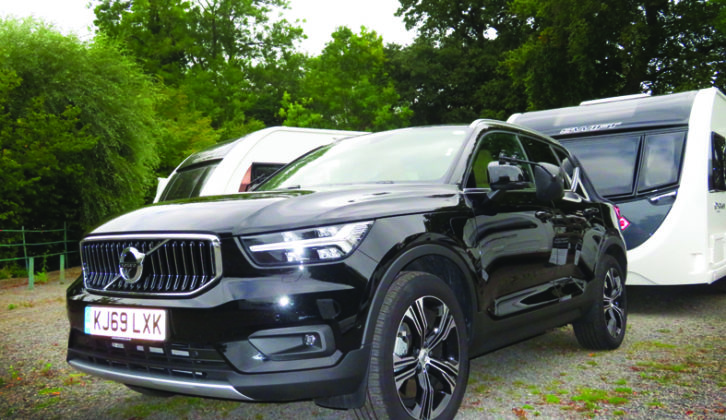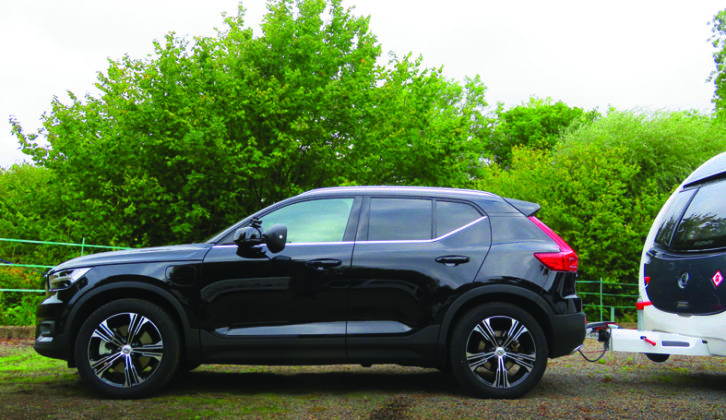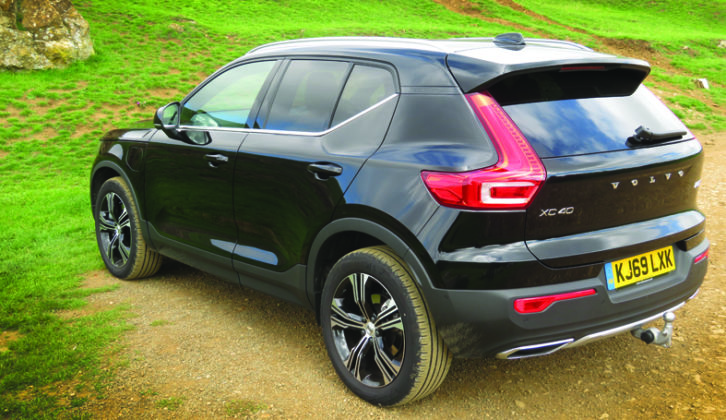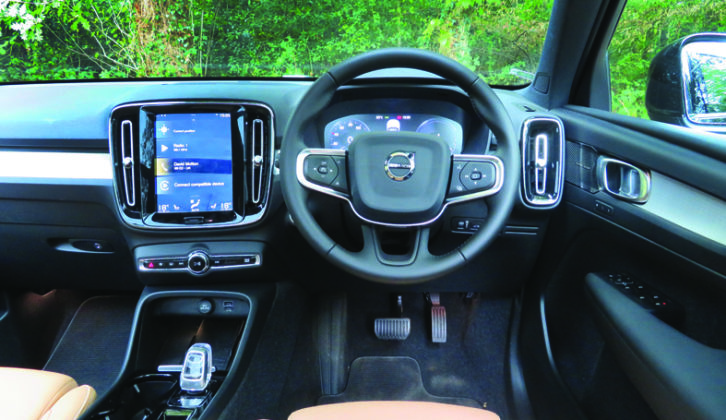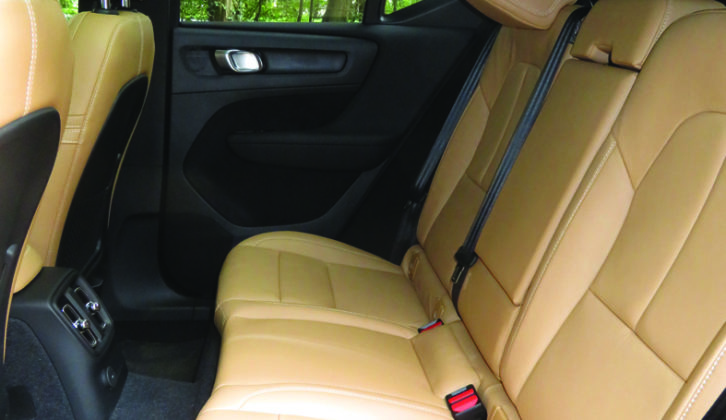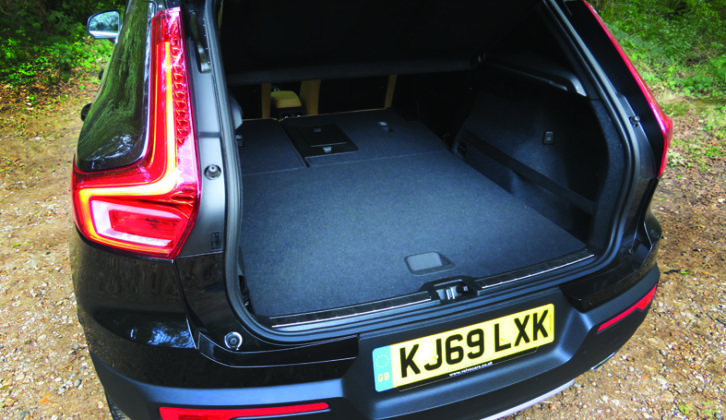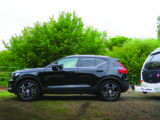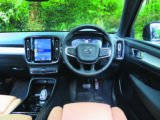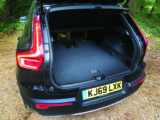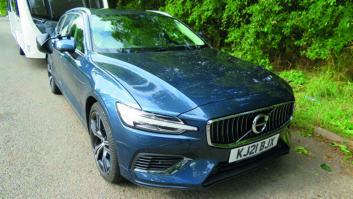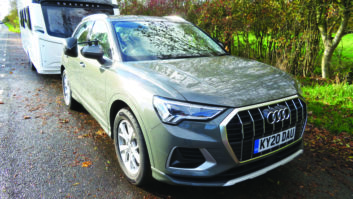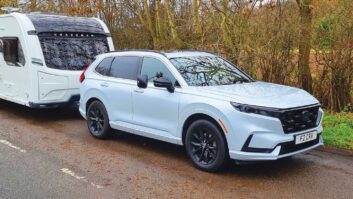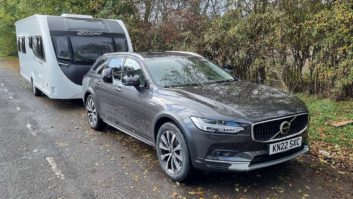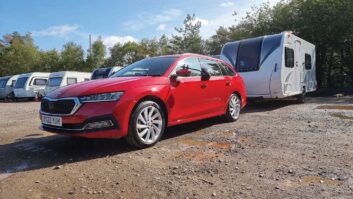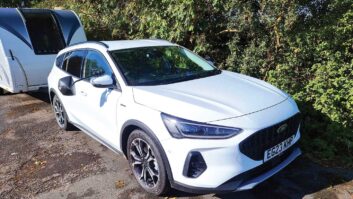Volvo has embraced electrification faster and with greater commitment than most car makers. The Volvo XC40 SUV line-up now includes two plug-in hybrids and an all-electric. Even the more conventional internal combustion engine cars features mild-hybrid technology.
We’re testing the more powerful of the plug-in hybrids, the T5 Recharge.
What are we looking for?
We’ve tested the diesel Volvo XC40 in the past and been impressed. Can the hybrid match it as a tow car?
Towing ability
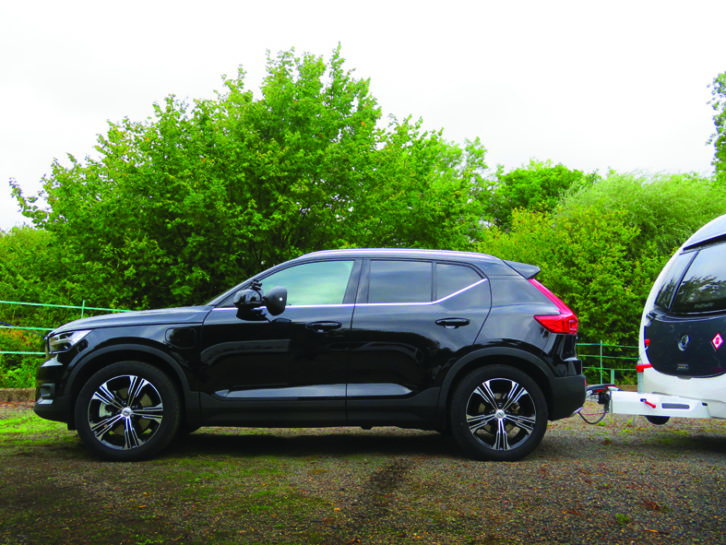
We’ve had mixed experiences towing with plug-in hybrids. Some are noisy and thirsty while towing, others are hampered by their low towing limits.
Neither of these constraints applies to the Volvo XC40 T5 Recharge. It has a kerbweight of 1812kg (listed as the weight in running order by Volvo). That gives it a healthy 85% match figure of 1540kg, well within the 1800kg towing limit.
We matched the Volvo to a Swift Fairway Platinum 880, which has a MiRO of 1536kg. We set off on our usual towing route with the batteries at just over half-full. To start with, the Volvo largely towing on electric power alone, with the petrol engine briefly waking up to provide a bit more urgency when accelerating up to 60mph, then switching off again.
There’s something quite eerie about towing at the legal limit with no engine noise at all.
The first part of the route is a mix of A-roads and country roads, and the Volvo felt at home. The XC40 was poised and comfortable, although the 8ft-wide van’s width was very noticeable when towing it behind a relatively narrow car.
As the battery charge dropped, the petrol engine contributed more regularly, but for the most part, the two sources of power worked seamlessly together.
There’s a 1-in-10 slope partway around this leg of the route, where we perform a hill start. The Volvo’s electronic parking brake held both car and caravan still and released smoothly.
There was a moment’s hesitation as the car tried to pull away using the electric motor, before the engine also pulled car and caravan forward, but the Volvo took the big Swift to the top of the hill without any wheelspin or sign of strain.
Would the Volvo XC40 have performed as well in the wet? Perhaps not, because unlike the Mitsubishi Outlander PHEV, the Volvo is not four-wheel-drive. In this vehicle, both the motor and the engine send power to the front wheels.
After the hill start, our route heads onto the motorway. With the pure-electric range now depleted, the petrol engine had more work to do. Even so, the Volvo remained quiet and refined, although a little less road noise would be welcome. The Volvo easily reached 60 mph and held this speed without fuss on motorway gradients.
Given the weight and size of the big Swift, the XC40’s stability at speed was highly impressive. We could feel a tiny tug at the back of the car when overtaking HGVs, but otherwise, the Volvo towed with the assurance of a larger and heavier car.
Solo driving
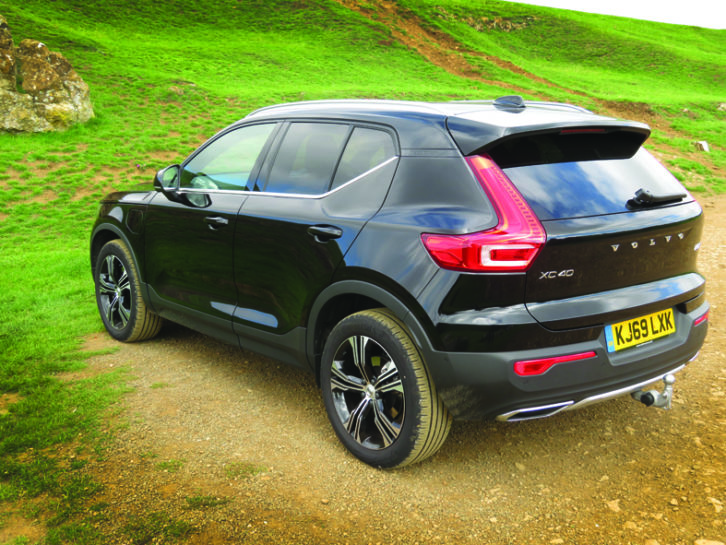
Without the weight of a caravan to pull, the XC40 Recharge is a quick car – Volvo claims a 0-60mph time of 7.3 seconds.
Making the most of that performance means leaning on the petrol engine, but we enjoyed its distinctive three-cylinder thrum.
Although heavy for its size, there’s nothing cumbersome about the way the XC40 drives. Perhaps it’s not quite as agile as a BMW X1, and the steering is rather numb, but it corners neatly.
While it’s happy to be hustled along at a decent lick, that’s not really what the XC40 is all about. The absence of a manual override for the automatic gearbox gives you a clue that Volvo expects drivers to settle back and relax in this vehicle, rather than press on.
The ride in this model might not be quite as comfortable as it would be in one of the lighter, conventionally powered XC40s, but it copes better with poorly surfaced roads than most of its rivals.
Practicality
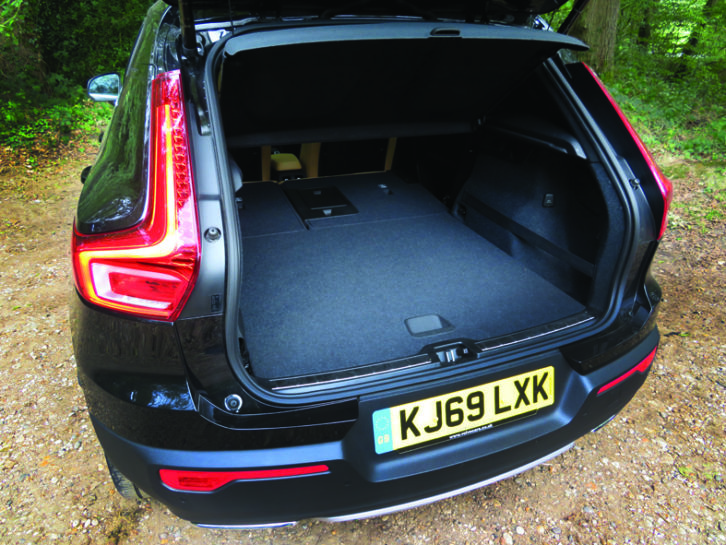
Volvo makes beautiful cabins. The XC40’s is no exception, with quality materials, lots of neat details, and a clean, minimal design.
The front seats are comfortable, and the wide range of electrical adjustment makes it easy to find a supportive driving position.
Given the XC40’s relatively small size, there’s lots of space in the back. Anyone sitting in the middle will have their legs either side of the large hump in the floor, but air vents between the front seats should help to maintain an agreeable temperature.
Boot space is unchanged in the hybrid, thanks to clever packaging and the decision to make the T5 Recharge front-wheel drive. But 452 litres is modest, and there are many SUVs at a similar price with more room.
Buying and owning
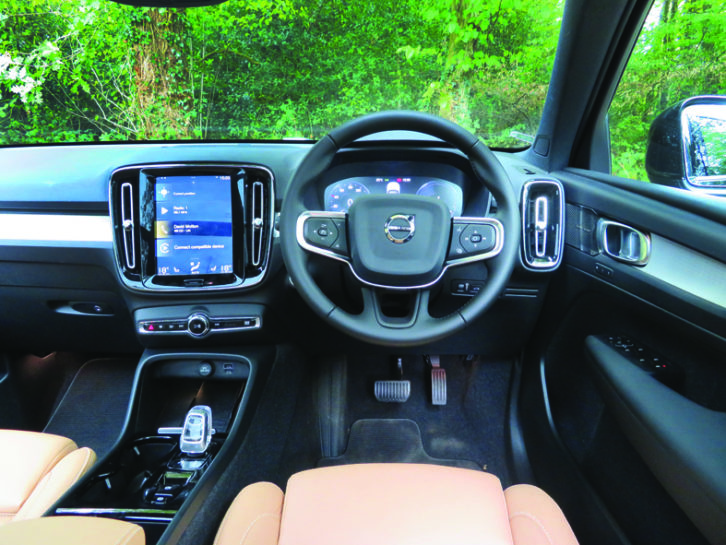
Our high-spec Inscription Pro test car costs £42,430, although What Car’s? research suggests healthy discounts are available.
The official all-electric range of 26.1-27.3 miles is shorter than a BMW X1 hybrid’s 32 miles, but still enough for many drivers to commute without using petrol. On our towing economy route, starting with the battery use over half full, we saw 26mpg.
Verdict
One of the best plug-in hybrids on sale and a capable tow car.
If you liked this…. READ THESE:
Ford Kuga 2.5 Duratec PHEV ST-Line X
If you’ve enjoyed reading this article, why not get the latest news, reviews and features delivered direct to your door or inbox every month. Take advantage of our brilliant Practical Caravan magazine SUBSCRIBERS’ OFFER and SIGN UP TO OUR NEWSLETTER for regular weekly updates on all things caravan related.
The Volvo took the big Swift Platinum 880 to the top of the hill without any wheelsman or sign of strain
